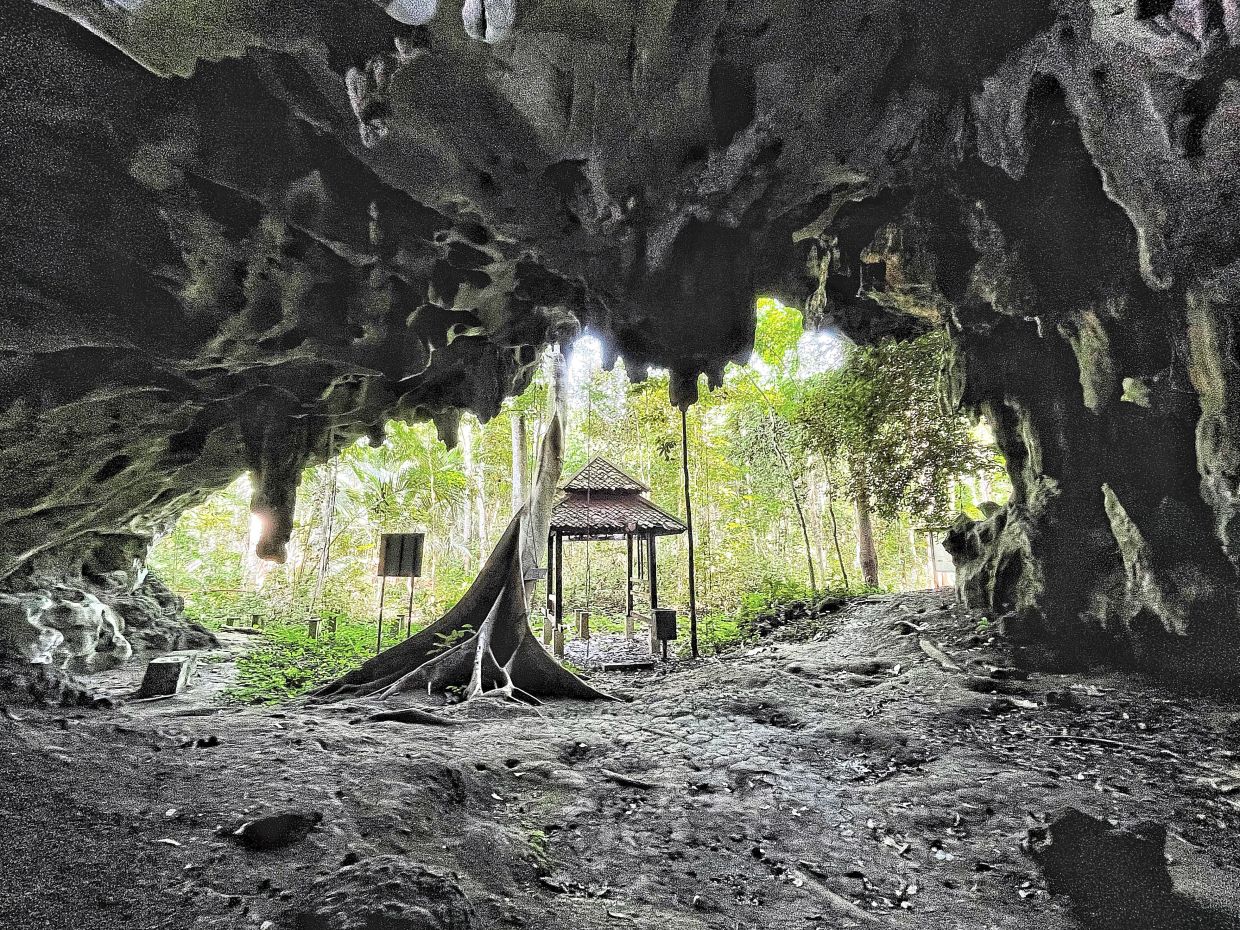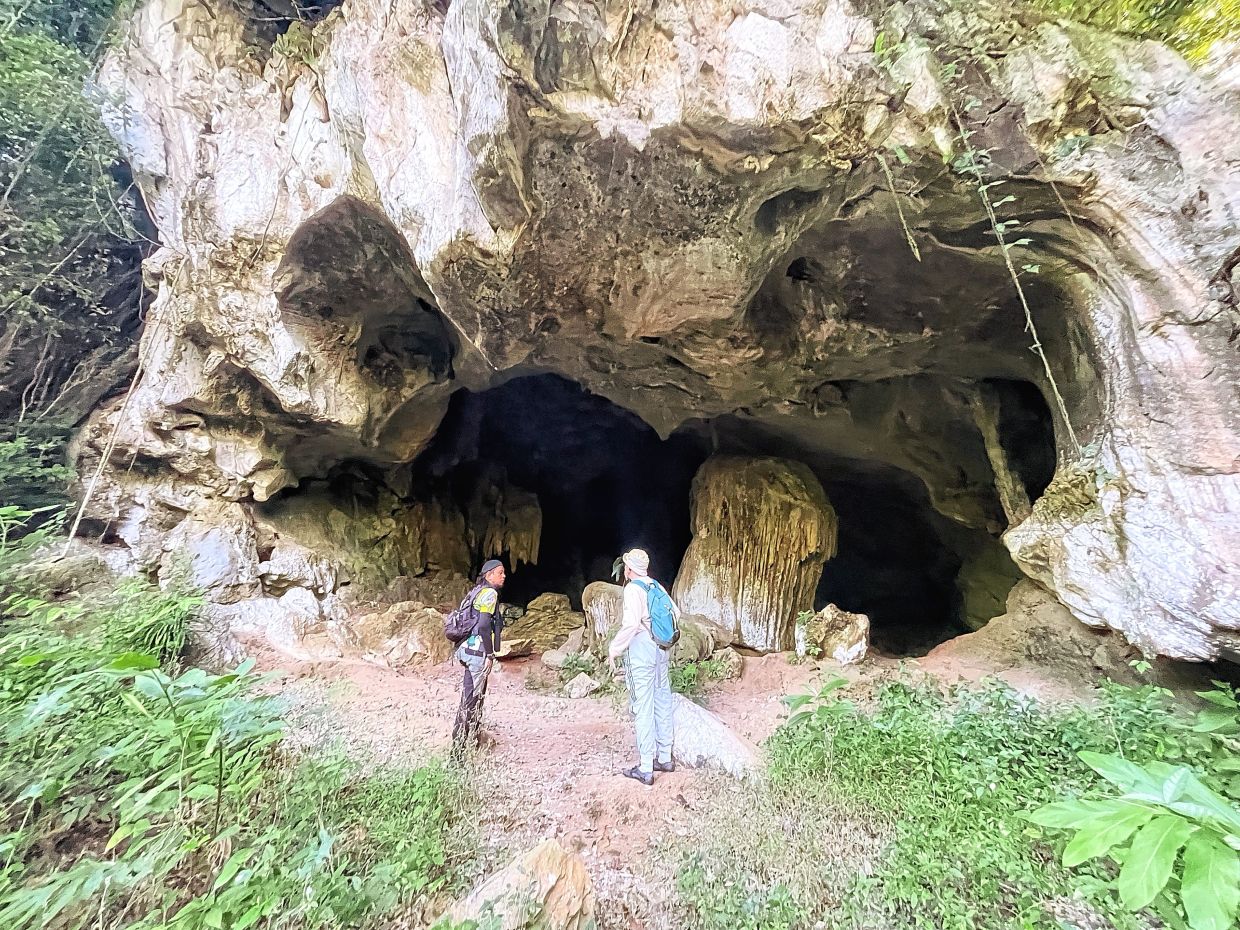ANN/THE STAR – Beneath my boots, the ground cautiously crunched as I knelt beside the vacant grave, identified by picks and string.
In adherence to Palaeolithic tradition, he was interred within a burial pit lined with a substantial layer of river shells. His flexed body, positioned in a foetal pose, rested upon this foundation, accompanied by 12 stone tools, additional river shells, and a variety of animal flesh for his journey into the afterlife.
Considering the secluded nature of the cave entrance, positioned on a steep incline within the UNESCO World Heritage Site of Lenggong in Perak, this ritual would have been an intricate and labour-intensive ceremony.
So, 11,000 years ago there was a community in Lenggong that already believed in an afterlife and cared for their own. This discovery of Palaeolithic burial observance in 1990 was a rare find in the archaeological world. Indeed the detailed evidence of this solitary burial of an individual of seemingly particular importance in prehistoric culture was a literal treasure.
Perhaps visiting the cave was meant to conjure up some meaning to the mystery. That the Perak Man’s silent burial chamber might itself be a portal to unlocking some riddle. That this ancient rock and soil cavern might still reverberate with some elusive revelation.
But, the geometric mapping of the archaeological digs aside, there is little resonance of The Perak Man in Gua Gunung Runtuh (Collapsed Mountain Cave) today. It was still with deference, though, that I skulked around, apologetic for every awkward shuffle echoing in dissonance. It is easy to see how the cave would have been a prized space of safety with plenty of light and ventilation. The perfect home to seek shelter in or even, to fittingly be buried in.
Sunlight pitched in from two natural doorways, illuminating patches of the craggy limestone floor and walls. There is a third entrance tucked behind a crop of jagged rocks. All entrances are barred and locked to the public, unless with permission from the Department of National Heritage.
We got here via Kampung Ulu Jepai. Traipsing through the village, we arrived at a little-used trail that was a 20-minute walk to someone’s small rubber plantation. Milky sap was running down the grooves cut into the tree bark, dutiful drips of latex collected in coconut cups. A vague recollection of school geography flickered. My guides, Eleng and Sanusi, are members of Team Hiking Lenggong who take visitors for treks along nature trails and up waterfalls in and around this green valley. Occasionally, someone (like myself) will even ask to visit these caves.
From the rubber field there’s a fairly steep jungle trek up Bukit Kepala Gajah before the last stretch of rocky manoeuvring with fixed ropes.
There are four archaeological clusters in the valley that make up Lenggong’s Unesco-anointed sites. Before Gua Gunung Runtuh, we had visited Gua Badak and Gua Harimau which are part of the first cluster. Gua Badak is known for its old rock face etchings by the Orang Asal of yesteryear who had frequented these cave complexes. There’s an interesting one of a row of “bossy white men” with hands on their hips.
As many as 11 skeletons were also unearthed in Gua Harimau, and perhaps even more significantly, bronze tools and vessels – which lent credence to the establishment of a Metal Age in the valley – the earliest in South-East Asia.
A week earlier, I had visited the second cluster of connected caves that lay southwest of the first. Gua Kajang, Gua Asar, Gua Ngaum and Gua Puteri are connected by a wooden walkway and easily accessible to all. Tools and bones were unearthed in Gua Kajang, the first cave to be discovered in 1917 with its graceful high archway.
The last cave in this complex is Gua Puteri, filled more with prevailing local lore than prehistoric leavings, and comprising a vast underground chamber of huge stalactites and stalagmites that stretches the whole length of Bukit Kepala Gajah.
In poetic symmetry, another almost complete 8,000-year-old skeleton was found at the nearby Gua Teluk Kelawar in 2004. This time it was a Perak Woman of similar age and height, if not social stature, to the Perak Man.

OUT OF AFRICA
After all that I just really wanted to see The Perak Man. Was he, at the end of the day (give or take 11,000 years) just a heap of old bones? What was his story? The Archaeological Field Centre of Universiti Sains Malaysia in Kampung Kota Tampan has a modest exhibition room with an excellent replica of The Perak Man.
Given that the original Perak Man remains at the Lenggong Archaeological Museum were still not available for public viewing at the time of writing, this seemed the next best option for understanding the Perak Man in context.
The Perak Man’s forefathers arrived out of Africa via the Middle East many million years ago. His remarkably intact burial chamber allowed for the extensive analysis that identified a curious genetic disorder, Brachymesophalangia type 2, in his bone formation.
Not only is The Perak Man one of the most complete skeletons for this time period in this region, he is the earliest known prehistoric skeleton with a genetic defect. The story extracted is that he would have had difficulty walking and would have spent most of his time since childhood squatting.
At his death aged around 45-50 years old he had reached an adult height of 157cm. The average life expectancy at that time would have been around 25 years, making The Perak Man’s life span unusually long.
So how was this physically compromised individual able to live almost twice as long as the average person in this hunting-gathering prehistoric society? Drawing from his exacting burial rites, and the fact that there was only one such burial in the cave, plus the location of the cave (at the highest point of the hill), academics have concluded that The Perak Man was a revered and respected member of his community.
He was possibly even a shaman, whose diligent care by the community settled here, led to his extended life. This supports the theory that this was a community that had a developed social hierarchy and spiritual beliefs.
It is a fitting memorial to The Perak Man that we have been able to reconstruct salient parts of his life 11,000 years after his passing. Could anyone ever have imagined the enormity of his 50 mortal years reaching forward in immortality? Awesome.

FROM BONES TO STONES
Placing this scattering of human bones, tools and vessels against the backdrop they were found in brings into focus the astonishing evidence of Lenggong’s continuous settlements reaching back into the earliest periods of prehistory.
That a meteor impact 1.83 million years ago formed rare melted impact rocks called suevite (which incidentally have only been identified in 27 locations around the world) found just casually lounging under the palm trees in Bukit Bunuh is testament to the exceptional prehistoric heritage.
Even more extraordinary is the stone axe welded to one of these rocks – evidence of the existence of a settlement almost two million years old.
Piecing all this together with the cave findings and the undisturbed in situ stone tool workshops at Bukit Jawa and Kota Tampan, we see the fantastic intricacy of life and the processes that culminated in the emergence of palaeolithic, neolithic and bronze age settlements along the Perak River, leading us into the present day.
How’s that for punching above one’s little Lenggong size? – Shireen Zainudin


